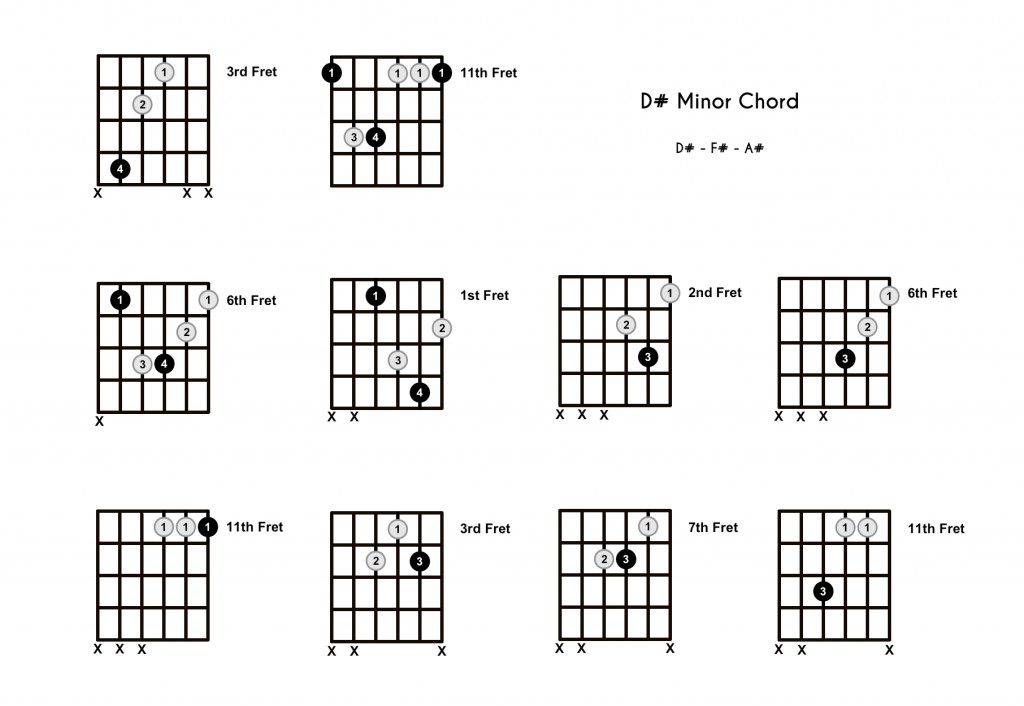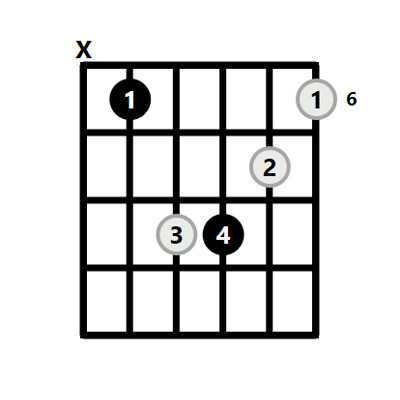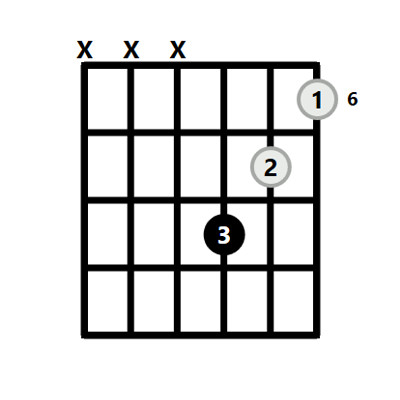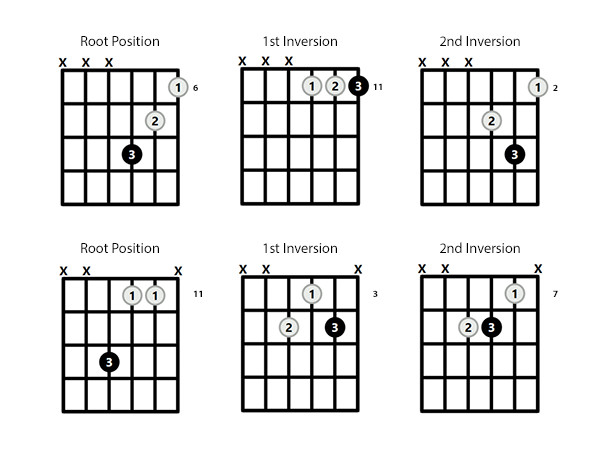The D#m chord on guitar, also known as the D sharp minor chord, might seem a bit elusive at first. It shares the same notes as the E flat minor chord (Eb minor), but in the world of guitar and music theory, context matters! Depending on the key of a song, particularly if you’re venturing into keys like B major or D# minor itself, you’ll encounter the D#m chord.
One thing that makes the D#m chord a little less immediately accessible to beginners is that none of its constituent notes (D#, F#, A#) are found on open guitar strings. This means we typically rely on barre chords to bring this minor chord to life on the fretboard.
Let’s dive deep into understanding, playing, and using the D#m chord on guitar.
Unpacking the D#m Chord Theory
Before we jump into finger positions and diagrams, let’s quickly solidify the theory behind the D#m chord:
- Notes: The D# minor chord is built from three notes: D#, F#, and A#.
- Scale Degrees: It’s derived from the D# Major scale by playing the 1st (root), flat 3rd, and 5th degrees.
- Intervals: Like all minor chords, the D#m chord contains these intervals from its root note (D#): minor 3rd, Major 3rd, and Perfect 4th (returning to the root in the next octave).
- Relative Major: D# minor is the relative minor of F# Major.
- Key Chord: D#m is the very first chord you’ll encounter in the key of D# minor. The complete set of chords in the key of D# minor are: D#m, E# diminished, F#+, G#m, A#, B, and Cx diminished.
Exploring 10 D#m Chord Shapes on Guitar
If you’re eager to see some visual representations of the D#m chord, here are 10 different shapes you can use on the guitar fretboard. These diagrams provide a comprehensive overview, and we’ll break down some of the most practical shapes in more detail below.
 D Sharp Minor Chord – 10 Shapes
D Sharp Minor Chord – 10 Shapes
The Standard D#m Barre Chord Shape
The most frequently used way to play the D#m chord on guitar is as a barre chord. This shape is based on the ‘root-5’ minor barre chord form, and for D#m, we start this shape on the 6th fret. This is a foundational chord shape that’s essential for any guitarist to learn.
 D Sharp Minor Chord Guitar
D Sharp Minor Chord Guitar
The “Easy” D#m Chord Shape (Mini Barre)
If full barre chords feel a bit challenging at first, there’s an “easy” or “mini” version of the D#m chord that can be a great starting point. This simplified shape uses just the top three strings of the standard barre chord. You’ll fret the 6th fret on the 1st string, the 7th fret on the 2nd string, and the 8th fret on the 3rd string. This mini-barre provides a less physically demanding way to get the sound of the D#m chord.
 Easy D Sharp Minor Chord
Easy D Sharp Minor Chord
Step-by-Step Guide: How to Play the Standard D#m Chord
Let’s break down the standard D#m barre chord into easy-to-follow steps:
- Index Finger Barre: Place your first finger across all five strings at the 6th fret. Ensure you’re pressing down firmly enough for all strings to ring clearly.
- Ring Finger (8th fret, 4th string): Position your third finger on the 8th fret of the 4th string.
- Pinky Finger (8th fret, 3rd string): Place your fourth finger on the 8th fret of the 3rd string.
- Middle Finger (7th fret, 2nd string): Put your second finger on the 7th fret of the 2nd string.
- Strum: Strum down from the 5th string to the 1st string. Avoid strumming the 6th string in this voicing of the D#m chord.
Following these step-by-step instructions is a fantastic way to ensure you’re correctly interpreting chord diagrams and developing good fretting technique for the D#m chord.
D#m Barre Chord Variations: Root 6 and Root 5 Shapes
As we mentioned, the D#m chord is commonly played as a barre chord. Beyond the standard root-5 shape, you can also utilize a root-6 barre chord shape.
- Root 5 Barre (6th Fret): This is the standard shape we’ve already discussed, starting on the 6th fret.
- Root 6 Barre (11th Fret): You can also play a D#m barre chord by using a ‘root-6’ minor barre chord shape, starting on the 11th fret. This shape is based on the Em chord shape moved up the neck.
 D Sharp Minor Barre Chord
D Sharp Minor Barre Chord
D#m Triads: Exploring Voicings
Delving into triads is an excellent way to deepen your understanding of minor chords like D#m and to explore the guitar fretboard in a more versatile way. Triads are three-note chords, and by rearranging the order of the notes (permutations), we create different inversions, each with a unique sonic flavor. The three inversions for the D#m triad are:
- Root Position: D#, F#, A#
- 1st Inversion: F#, A#, D#
- 2nd Inversion: A#, D#, F#
By playing these D#m triads on different sets of three strings, you can uncover six distinct triad shapes, expanding your chord vocabulary and fretboard knowledge.
 D Sharp Minor Triad
D Sharp Minor Triad
Keys Where the D#m Chord Appears
Understanding the keys where the D#m chord naturally occurs will help you use it effectively in your playing and songwriting. You’ll find the D#m chord in:
- D# minor key: (D#m, E#dim, F#, G#m, A#, B, C#dim) – As the tonic chord!
- G# minor key: (G#m, A#m, B, C#m, D#m, E, F#)
- A# minor key: (A#m, B#dim, C#, D#m, E#m, F#, G#)
- F# Major key: (F#, G#m, A#m, B, C#, D#m, E#dim)
- B Major key: (B, C#m, D#m, E, F#, G#m, Adim)
- C# Major key: (C#, D#m, E#m, F#, G#, A#m, B#dim)
Alternative D#m Chord Shapes for Guitar
While barre chords are the most common, there are other interesting ways to voice the D#m chord. These alternative shapes might not be used as frequently as the standard barre, but they offer unique sonic textures and can be useful in specific musical contexts. Explore different voicings to expand your sonic palette.
D#m Chord Substitutions: Adding Flavor
Once you’re comfortable with the basic D#m chord, you can start exploring chord substitutions to add color and emotion to your playing. Many D# minor chords with extensions can be used as substitutes.
- Extended Chords: Chords like D#m9, D#m11, and D#m6 can often replace a simple D#m, bringing richer harmonies.
- D#m7: The D#m7 chord is a very common substitute and often used interchangeably with D#m.
- Relative Major Substitutions: Consider variations of the F# chord (the relative major of D# minor) as substitutions. Chords like F#6, F#69, F#maj9 can create interesting harmonic shifts while retaining a connection to the D# minor tonality.
Scales to Solo Over the D# Minor Chord
If you’re looking to improvise or write melodies over the D#m chord, certain scales will work particularly well. These scales will provide the right notes to create musical phrases that complement the D# minor harmony.
- D# natural minor scale (D# aeolian mode)
- D# harmonic minor scale
These scales are foundational for soloing and melody writing over minor chords and will unlock a world of musical possibilities when playing over the D#m chord.
Further Exploration
To continue your journey with the D#m chord and related concepts, explore these resources:
- D# natural minor scale
- D# harmonic minor scale
- How minor chords work (Chords page)
- D# minor arpeggio (Chords page – needs specific D#m arpeggio link if available)
- D#m7 Chord
- D#m/F# chord
- D#m/A# chord
By mastering the D#m chord on guitar, you’ll expand your chord vocabulary and unlock new musical possibilities on the fretboard. Keep practicing, experimenting, and exploring!
 Get Guitar Chords Galore eBook
Get Guitar Chords Galore eBook
Alt text: Banner image with text “Get Guitar Chords Galore eBook” promoting a free chords ebook and guitar lessons.
